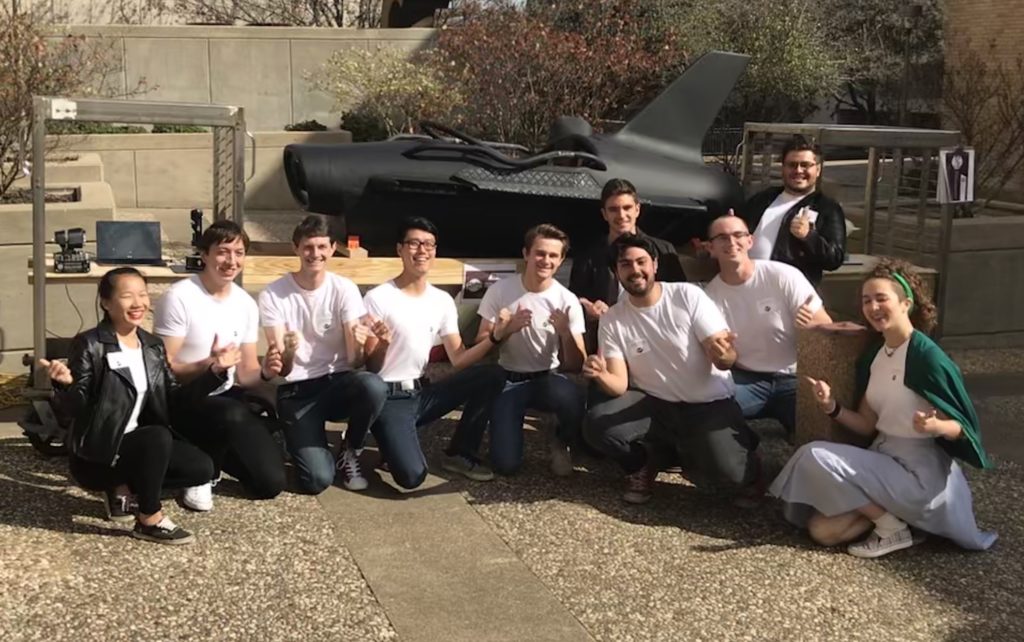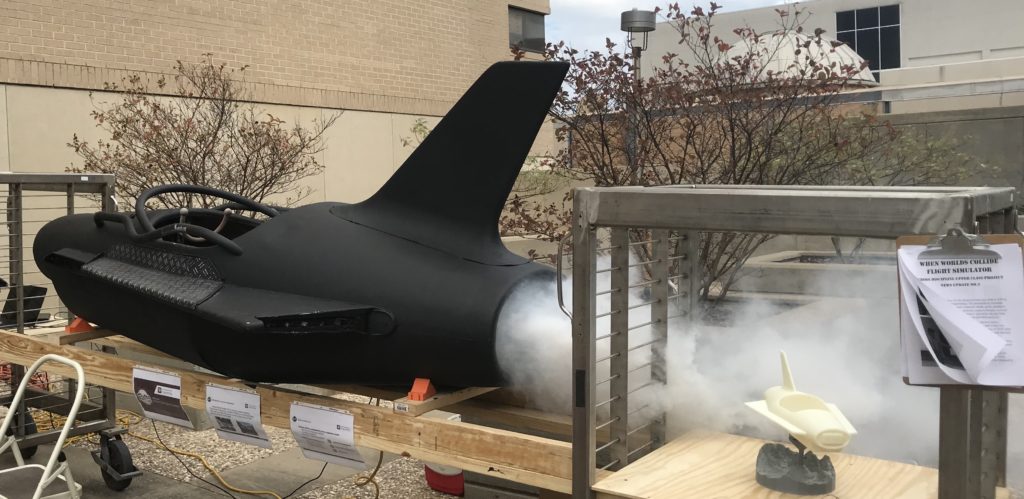
Senior Aerospace Engineering students embrace the 50’s as they work to repurpose a vintage space structure into a VR flight simulator.
Earlier this fall, Dr. Hartl teamed with Jim Mabe of Boeing and Eric Schulte, a local business owner, to initiate a project to convert a vintage 1950’s carnival ride rocket car into a virtual reality (VR) flight simulator for K-12 STEM outreach. The Aerospace Engineering senior capstone design team sponsored by Hartl to develop and deploy this experience has recently completed their critical design review and will move forward with the project.
 The “Retro Rocket” team of aerospace engineers is focusing on flight simulator software development and VR hardware integration. They are supported by a complimentary team of mechanical engineering seniors who are focusing on development of the controllable 6-degree of freedom base on which the vintage rocket will be mounted. A third team of students from the College of Architecture will address the aesthetics of the vehicle, maintaining a 1950’s style while also showcasing Texas A&M. The rocket is currently being structurally refurbished by a local metalworks company after years of neglect and exposure to the elements.
The “Retro Rocket” team of aerospace engineers is focusing on flight simulator software development and VR hardware integration. They are supported by a complimentary team of mechanical engineering seniors who are focusing on development of the controllable 6-degree of freedom base on which the vintage rocket will be mounted. A third team of students from the College of Architecture will address the aesthetics of the vehicle, maintaining a 1950’s style while also showcasing Texas A&M. The rocket is currently being structurally refurbished by a local metalworks company after years of neglect and exposure to the elements.
The final customer for the fully configured and fully developed device will be Spark! PK-12, the STEM outreach arm of the Texas A&M College of Engineering. This team will transport the VR flight simulator to various outreach events to excite young future engineers about the joys of flight.

The project is funded by The Boeing Company as a means to develop the flight simulation, VR, and software capabilities of these senior students. Dr. Hartl was chosen to act as instructor and advisor due to his experience in founding and directing the MAESTRO VR Studio, and because of his interest in PK-12 STEM outreach. Contributing to the design review were engineering professionals from Siemens, the US Air Force, and NASA, among others. Also contributing were professionals from Grand Station, who represented the largest arcade in the region and provide critical “human-machine interaction” and user experience input to the engineering team.
